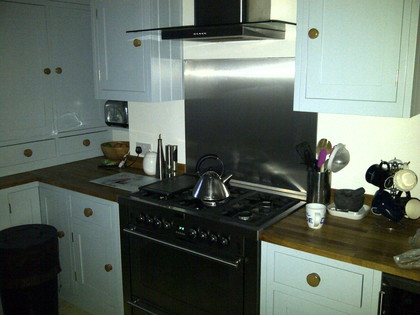Why you can trust TechRadar

The BlackBerry Torch 9810 comes with a 5MP snapper on board.
We could have copied and pasted that line from the Torch 9800 review (we didn't though) because nothing has changed here in relation to resolutions.
It seems a bit of a poor show really, because you can't help feeling RIM isn't embracing the whole experience.
Yes, we know it's about quality not quantity, and processors and software etc are just as important as pixel counts, but it would be nice for it to have come with at least something that showed RIM was trying to be a little bit future-proof.
Anyway, we do the best with what we're dealt and, luckily, it's not too shabby an affair.

On launch, you'll see it's the same interface we had in the Torch 9800. It's straightforward and it does the job.
RIM gives you the luxury of several scene modes to pick from, and you can toggle geotagging on and off from the main camera screen.
Sign up for breaking news, reviews, opinion, top tech deals, and more.
Face detection is a nice addition, and we found it works OK, but the majority of people will leave it on Auto because in quick point-and-shoot instances, you don't have time to faff about with settings. Still, good on RIM for giving us some options.
And it is a responsive camera. As before, it starts up almost instantly on pressing the button, and that's a major plus because other phones can take much longer.

Plus, echoing the Torch 9800, there's a marked difference between what you see through the viewfinder and the photos you take on the BlackBerry Torch 9810. It's a good difference, though, because photos look so much richer and more vivid when viewed back than they appear during the actual act of photographing.
Autofocus on the Torch 9810 is a reasonable effort (we compare this to the Bold 9900, which was left wanting in our tests), although there's still no tap-to-focus, which is a shame.
Would it have hurt RIM too much to give us a little bit of leeway and decide where WE want the shot to be focused? With that big screen acting as a viewfinder, it's a feature you can't help but notice by its absence.
Image stabilisation is one of the selling points of the BlackBerry Torch 9810, and is even touched on by RIM in the literature it sends to reviewers.
At first we thought it was rubbish, until we realised that we hadn't enabled it in the options (but then again, will many others know that it needs to be flicked on to improve performance?).

And then, once we had enabled it, we had a great laugh testing it out.
We did our best drunk old man impressions and shook the phone as constantly as we could while we took photos of various inanimate objects.
And true to its word, the image stabilisation did kick in most of the time.
There is a trade off though, and that is that for stabilising the image, you end up with noise on the resulting pictures. It's not disgraceful, but it's noticeable, and looks a little bit like when you take a photograph in low light at night (even though our images were taken in full bright daylight).
The LED flash does a sterling job, and we can't complain about it at all.
It picks points out as directed in even the bleakest of conditions, and really puts its all into bathing your shots with white (not yellow, phew) light.
It's a really decent flash for a mobile phone – managing to illuminate a pitch dark room to take the required shot.

FLASH: Taken in pitch black, the light both illuminates and aids autofocus

FAR-REACHING: The light illuminates a pitch black room enough for a decent snap

NOISY: With image stabilisation enabled, you can't help but notice the extra noise

SCREEN STRIPES: Image stabilisation mode enabled

CLEARER: The same image with image stabilisation mode disabled

COLOURFUL: In full daylight, the 5MP camera reproduces colours richly

CLOSE-UP: Close up subjects are subject to slight blurring if they move
